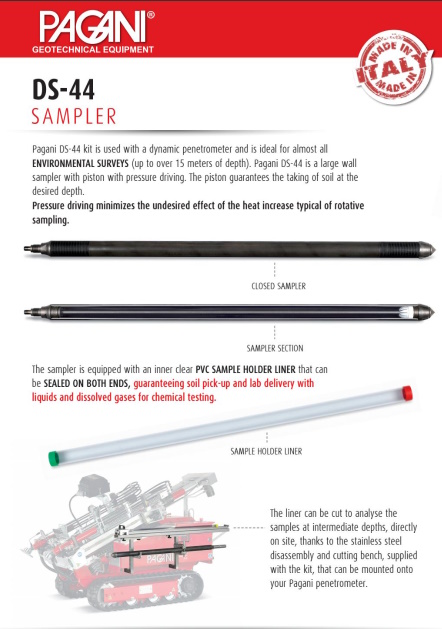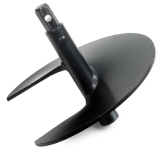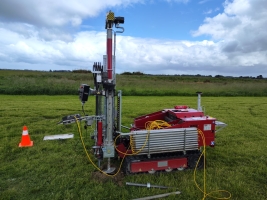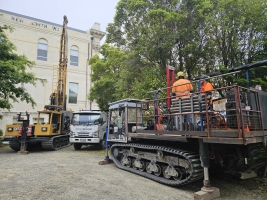Cone Penetration Test with pore water pressure measurement (CPTU)
A cone penetration test with pore water pressure measurement, or CPTU, is a static penetration test with water pressure measurement.
The main purpose of CPT (CPTU) testing is to identify subsurface conditions: classify soil, detect layers and measure strength, determine deformation characteristics and the permeability of foundation soils. This is done mainly on the basis of empirical correlations, and also partly on the basis of theoretical outlines.
The CPT test is performed by pressing the pointed probe into the soil vertically using pressing rods. The pointed probe must be pressed into the soil at a constant speed. It is necessary to measure the resistance of the pointed probe with pore water pressure (qc) and, if appropriate, the local friction sleeve on the probe (between the friction sleeve and the surrounding soil).
In addition to friction resistance and friction on the sleeve, it is possible to measure the water pressure (CPTU) and collect data on seismic waves (SCPT).

Equipment for CPTU testing consists of:
- CPTU probe
- Pressing equipment
- Data collecting system
The main parts of the CPTU probe are cone, friction sleeve and filter – pore pressure sensor.
Advantages of CPTU testing:
- fast and continuous profiling
- cost-effectiveness and high productivity
- operator-independent results
- a solid theoretical background is necessary to interpret results
- perfect for soft soil.
S-CPTu Test
With the new seismic piezocone, an electric tip equipped with geophone, it is possible to detect the seismic waves P and S, making a seismic classification of the ground.
In a single test it will be possible to obtain the values of Qc, Fs, u2 and the data of the propagation speed of the waves in the ground (Vs - Vp).
You can also get data about the dissipation time (time measured between measurement of the overpressure obtained during the driving stage and the pressure measured when releasing the driving pressure).

DP TESTS
Pagani Geotechnical Equipment penetrometers allow DP dynamic penetrometric tests to be carried out according to International Standard Procedures.
The DP test consists of driving a conical bit into the ground and measuring the number of strokes necessary to do so.
DP dynamic penetrometric tests are very common, and used by geologists and geotechnicians since they are extremely simple, cheap and quick to perform.
The average energy efficiency of 78% (proportion of energy transmitted to rods) allows the N20 value to be standardised with the data of other in-situ tests, mainly NSPT.
![]()
SAMPLER
 The sample must represent its matrix so as to offer a complete frame of its qualitative status.A soil sample to be analysed must guarantee:
The sample must represent its matrix so as to offer a complete frame of its qualitative status.A soil sample to be analysed must guarantee:
- that the sample chemical composition has not been modified through heating, washing or contamination by the drilling tools;
- that the planimetric position and depth have been accurately detected;
- that the sample has been preserved correctly, up to the time of delivery to the lab.
However, given the soil uneven nature, it is difficult to extend the characteristics of a single sample to a large portion. Each sample represents exclusively the soil portion around the pick-up point whose size depends on many factors; for this reason, the sampling efficacy depends on the quantity of samples: the higher the number of samples, the higher its accuracy.
AUGER
 Helical Auger Ø220mm or Ø300mm
Helical Auger Ø220mm or Ø300mm
 Pagani TG63 -150 CPT
Pagani TG63 -150 CPT Pagani 150 CPT Morooka Track Mounted
Pagani 150 CPT Morooka Track Mounted